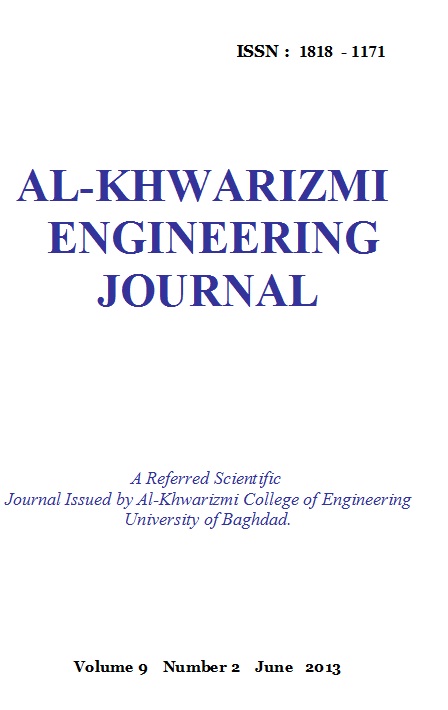Effect the Grain Size on the Polymer Matrix Composites Reinforced by Reenia Particles
Keywords:
بولي يورثان, مادة متراكبة حيوية, دقائق (Reenia)Abstract
Synthetic polymers such as polyurethane are used widely in the field of biomedical applications such as implants or part of implant systems.
This paper focuses on the preparation of base polymer matrix composite materials by (Hand Lay-Up) method, and studying the effect of selected grain size (32, 53, 63, 75, and 90) µm of (Reenia) particles on some properties of the prepared composite.
Mechanical tests were used to evaluate the prepared system (Tensile, Compression, Impact, and Hardness) tests, and a physical test of (Water absorption %), and all tests were accomplished at room temperature.
Where results showed tensile test (maximum tensile strength and modulus of elasticity) high at small grain size while the percentage of elongation decreased with increasing size. As the compressive strength increased with small grain size. And also the values of hardness and fracture energy affected by particle size where the hardness and fracture energy increased at small particles size of compared to larger particles size. While the percentage of water absorption increased at large particle size.
In general the results showed clear improvement in properties and maximum values which get it of tensile strength, Modulus of elasticity, elongation percentage, compression strength, fracture energy, hardness and water absorption were as follows ((34.8 MPa), (10%), (268 N/mm2), ( 54.2 MPa),( o.408 J), (78.9 Shor (D)), (0.2668 %)) at using (32µm)) except water absorption was at (90µm) .
Downloads
Downloads
Published
Issue
Section
License
Copyright: Open Access authors retain the copyrights of their papers, and all open access articles are distributed under the terms of the Creative Commons Attribution License, which permits unrestricted use, distribution, and reproduction in any medium, provided that the original work is properly cited. The use of general descriptive names, trade names, trademarks, and so forth in this publication, even if not specifically identified, does not imply that these names are not protected by the relevant laws and regulations. While the advice and information in this journal are believed to be true and accurate on the date of its going to press, neither the authors, the editors, nor the publisher can accept any legal responsibility for any errors or omissions that may be made. The publisher makes no warranty, express or implied, with respect to the material contained herein.












